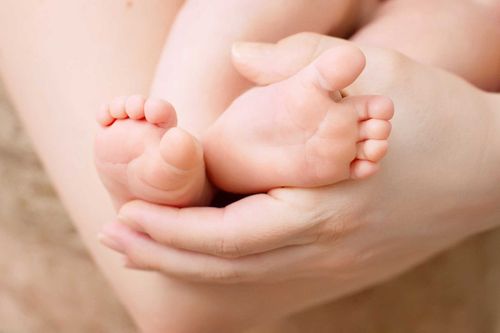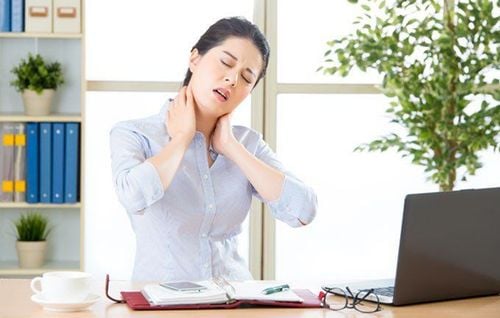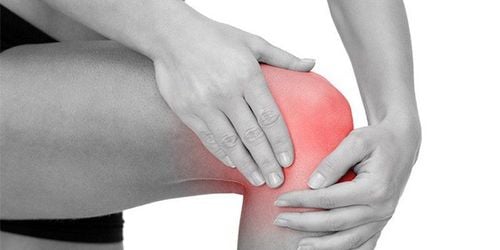This is an automatically translated article.
Osteoarthritis is very common in the elderly. This is the aging phenomenon of cartilage in joints, like other parts of the body, gradually increasing over time. From the age of 70 onwards, almost everyone has signs of osteoarthritis.Degenerative joint damage is common in the spine (especially in the lumbar and cervical spine); in the lower extremities such as knees and hips; in the upper extremities such as the shoulder joint. Most patients only have a few joints affected, rarely many joints.
Regular exercise helps prevent osteoarthritis.
In the structure of joints, cartilage plays a very important role. Cartilage covers the ends of bones as a shock absorber, both resisting shocks when the joints are in motion and reducing friction to help the bones slide over each other easily. In degenerative joint disease, the surface layer of cartilage is dry, cracked, and eroded. Cartilage loses its cushioning function, causing joints to rub against each other, causing pain and swelling. Over time, the joint will be deformed; Bone spurs are formed and grow at the bone edge, causing increased rubbing, the more pain the patient has.
The earliest symptom of the disease is pain when moving, at first it only hurts when the joint is active, the pain will go away after resting; After that, the pain can be dull and constant and the pain is dominant when moving. If hip osteoarthritis, the patient has pain in the groin area, the front of the thigh, possibly the whole buttock area, spreading to the back of the thigh. If the knee joint is degenerative, the patient has a lot of pain when walking, standing up and sitting is difficult, especially when going up and down stairs or squatting to stand up, sometimes the pain is so bad that he suddenly collapses. If lumbar spondylosis, the patient has dull pain in the low back and usually the pain is dominant in the afternoon after a day of working, having to stand a lot or doing heavy labor, when lying down, the pain will decrease. When in pain, the patient makes bending, leaning, supine or turning movements very difficult.
After the pain symptom is the limitation of movement. If you have hip osteoarthritis, the patient will limp, have difficulty flexing the hip, and it will be difficult to bend the thigh into the abdomen. If you have osteoarthritis of the knee, the movements of bending and straightening the legs are limited, standing up and sitting down is difficult, you can see a crackling sound when moving the joint. If you have shoulder osteoarthritis, you will limit the movements of putting your hands forward, backward, turning your hands and not being able to do some simple movements such as scratching your back, combing your hair...
In addition to the two main symptoms, pain and With limited mobility, the patient may experience muscle atrophy, especially the extremities.
Prevention and treatment of diseases
To prevent and limit osteoarthritis, even when you are over 40, you need to exercise regularly and try to avoid obesity or diabetes because osteoarthritis is very common and easy severe in these patients. Pay attention to avoid movements that are too strong, especially those that can misalign the joints and spine.
If there are signs of pain and limitation of movement, it must be treated immediately. In the past, people mainly used steroids and non-steroidal anti-inflammatory drugs to relieve pain and inflammation symptoms for patients. This is to treat the symptoms, not the cause. Currently, the treatment of osteoarthritis has made many advances, there are drugs that cure the disease completely, not stopping at treating symptoms.
The drug with good effectiveness in the treatment of osteoarthritis today is Glucosamine. This drug not only has the effect of reducing pain, anti-inflammatory but most importantly, stimulating cartilage production, stopping the progression of the disease, solving the root cause of the disease. Pharmacologically, Glucosamine participates in the synthesis of articular cartilage, inhibits enzymes that destroy joint cartilage and reduces free radicals that destroy cartilage-producing cells. Glucosamine also stimulates the reproduction of bone connective tissue, reducing the process of bone calcium loss.
It also increases the production of synovial mucus, so it increases the viscosity, increases the lubricating capacity of the synovial fluid. Therefore, Glucosamine not only reduces the symptoms of osteoarthritis (pain, difficulty in movement) but also prevents the process of joint degeneration, prevents disease progression, affects the pathogenesis of degeneration, and restores recovery. articular cartilage structure.
Follow people













